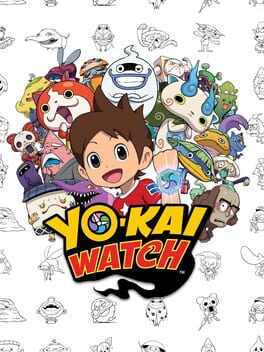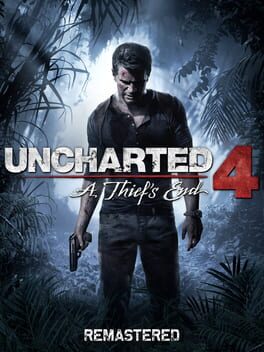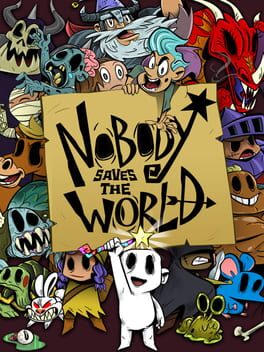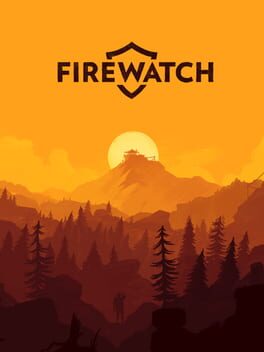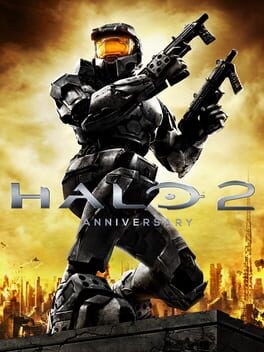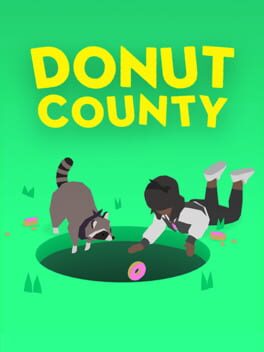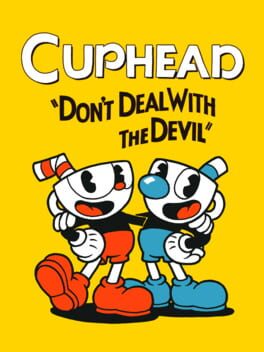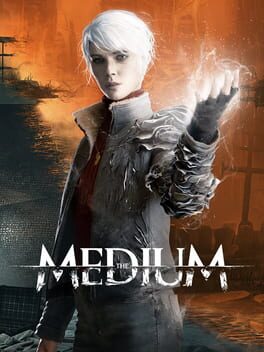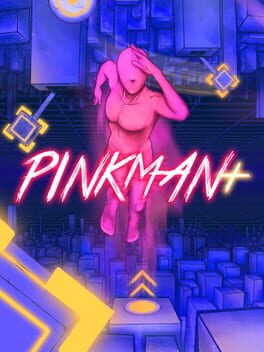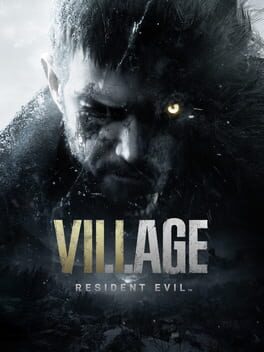Edge
BACKER
7 reviews liked by Edge
Just some quick thoughts for this one, apologies if it's a little scatterbrained.
As a game this is probably the most ""content"" for your dollar that you could possibly get out of a scripted game and I'm truly blown away by how much effort it must have been to put this whole thing together. Dondoko Island is a minigame with more mechanics than 98% of the games I play each month. If that were all there is to say then I'd be giving it a 10/10 - and I understand that everything after this point is going to make me sound like an insane person to 85% of people playing this - but the truth is that this game (like Y7) is so hell-bent on being silly at all times that it often undercuts itself when it comes to dramatic tension or consistency of plot/characters - again! Genuinely, if the Ichiban games just knew how to solve their tonal issues then I'd be giving this game an extra star, if not more. Classic Yakuza goofiness works best as a break from the drama - it's less effective when the cutscene establishes a legitimate, serious threat to your loved ones and then immediately warps to your female party member decked out in a coconut bra and maracas strumming a ukulele at a guy with a beach ball for a torso.
Some things (the combat and chain attacks, Hawaii, every non-Sujimon minigame) are miles better than they were in Y7, but the game also loves to tell the same jokes over and over so things that are initially endearing (seonhee fangirling over kiryu) become extremely grating by the end. I also think Yakuza Gaiden works better as a farewell tour for Kiryu because it's not just crammed into a game about someone else in a city he's barely been to - having Kiryu reminisce can be fun at points but so many of the locations are completely arbitrary and having Kiryu go "Remember all the times Date rescued me in a helicopter?" because he walked into a cafe feels dry and artificial, not fun. I'm almost resentful that so much of the focus is placed on him in this story when his main purpose for most (not all) of it is to be a cool friend who people on the street constantly recognize. The big Kiryu checklist wavers between being interesting (reflecting on basic things Kiryu never got to enjoy because of his insane life of constant fighting) and mind-numbing (do you remember the dancing minigame in Y0? how about the fishing minigame?). Ultimately though, it's part of a larger push to make these characters feel like they have lives outside of Ichiban's adventures (Ichiban included) and it works wonders... when it works at all. Tomizawa shines particularly brightly as someone whose drink links highlight a life that's been uprooted in a way that ties into the main plot while remaining personal to him and exposing more of his character. Saeko and the other women, however, mostly get these nothingburger chats that are about Ichiban or how cool Kiryu is or how stressful it is to run a business.
Also: It needs to be better about signposting when you're about to switch protagonists. At one point it splits your group between two locations and warns you that you're going to need good gear because there's some combat coming up, but it doesn't tell you that it's going to switch you to the other group first, leading me to 75 straight minutes of fighting with a party that is severely underpowered because I read the warning and assumed I'd be fighting with the group I was currently controlling.
Also also: I'm still not a fan of the enemies they cook up in the Ichiban games. A lot of them are creative and fun and a lot of them really, truly are not - it's cool to see what attacks they assign to random day jobs, it's not funny or interesting when the fat guy in ill-fitting clothes hits you with a big hot dog or the Chinese mafioso performs acupuncture in the middle of a fight. That shit is so fucking boring, dog. Ichiban could really use a better imagination.
I realize that this might seem overly negative for the rating I've given. I enjoyed myself for the vast majority of its runtime, but so much of this just collapses in on itself for me when I give it any thought at all. I'm still in awe at the production value here - this game blows my mind in much the same way that 2D mode in Dragon Quest XI did - they simply did not need to go so hard in crafting a big video game buffet. Combat has only seen a few changes but the changes that have been made take it from something I tolerated in Y7 to something I truly enjoy (as long as I'm not underleveled). Y8 addresses so many of the concerns I had with Y7 but about once an hour I'm reminded that the Daidoji faction is transparently complete nonsense (in the same way the Florist used to be), that the Drink Links still insist on having One Big Problem that each character must solve that ends in a fight (which means each character only gets to talk about a single thing during their moments in the spotlight), that both the English and the Japanese dubs feel inappropriate for the setting at least 50% of the time. There's a lot to like about this game and for significant chunks of it - mostly while I was ignoring the story - I was considering just giving it 5 stars and calling it a day, but the more I think about it, the less appropriate that feels.
As a game this is probably the most ""content"" for your dollar that you could possibly get out of a scripted game and I'm truly blown away by how much effort it must have been to put this whole thing together. Dondoko Island is a minigame with more mechanics than 98% of the games I play each month. If that were all there is to say then I'd be giving it a 10/10 - and I understand that everything after this point is going to make me sound like an insane person to 85% of people playing this - but the truth is that this game (like Y7) is so hell-bent on being silly at all times that it often undercuts itself when it comes to dramatic tension or consistency of plot/characters - again! Genuinely, if the Ichiban games just knew how to solve their tonal issues then I'd be giving this game an extra star, if not more. Classic Yakuza goofiness works best as a break from the drama - it's less effective when the cutscene establishes a legitimate, serious threat to your loved ones and then immediately warps to your female party member decked out in a coconut bra and maracas strumming a ukulele at a guy with a beach ball for a torso.
Some things (the combat and chain attacks, Hawaii, every non-Sujimon minigame) are miles better than they were in Y7, but the game also loves to tell the same jokes over and over so things that are initially endearing (seonhee fangirling over kiryu) become extremely grating by the end. I also think Yakuza Gaiden works better as a farewell tour for Kiryu because it's not just crammed into a game about someone else in a city he's barely been to - having Kiryu reminisce can be fun at points but so many of the locations are completely arbitrary and having Kiryu go "Remember all the times Date rescued me in a helicopter?" because he walked into a cafe feels dry and artificial, not fun. I'm almost resentful that so much of the focus is placed on him in this story when his main purpose for most (not all) of it is to be a cool friend who people on the street constantly recognize. The big Kiryu checklist wavers between being interesting (reflecting on basic things Kiryu never got to enjoy because of his insane life of constant fighting) and mind-numbing (do you remember the dancing minigame in Y0? how about the fishing minigame?). Ultimately though, it's part of a larger push to make these characters feel like they have lives outside of Ichiban's adventures (Ichiban included) and it works wonders... when it works at all. Tomizawa shines particularly brightly as someone whose drink links highlight a life that's been uprooted in a way that ties into the main plot while remaining personal to him and exposing more of his character. Saeko and the other women, however, mostly get these nothingburger chats that are about Ichiban or how cool Kiryu is or how stressful it is to run a business.
Also: It needs to be better about signposting when you're about to switch protagonists. At one point it splits your group between two locations and warns you that you're going to need good gear because there's some combat coming up, but it doesn't tell you that it's going to switch you to the other group first, leading me to 75 straight minutes of fighting with a party that is severely underpowered because I read the warning and assumed I'd be fighting with the group I was currently controlling.
Also also: I'm still not a fan of the enemies they cook up in the Ichiban games. A lot of them are creative and fun and a lot of them really, truly are not - it's cool to see what attacks they assign to random day jobs, it's not funny or interesting when the fat guy in ill-fitting clothes hits you with a big hot dog or the Chinese mafioso performs acupuncture in the middle of a fight. That shit is so fucking boring, dog. Ichiban could really use a better imagination.
I realize that this might seem overly negative for the rating I've given. I enjoyed myself for the vast majority of its runtime, but so much of this just collapses in on itself for me when I give it any thought at all. I'm still in awe at the production value here - this game blows my mind in much the same way that 2D mode in Dragon Quest XI did - they simply did not need to go so hard in crafting a big video game buffet. Combat has only seen a few changes but the changes that have been made take it from something I tolerated in Y7 to something I truly enjoy (as long as I'm not underleveled). Y8 addresses so many of the concerns I had with Y7 but about once an hour I'm reminded that the Daidoji faction is transparently complete nonsense (in the same way the Florist used to be), that the Drink Links still insist on having One Big Problem that each character must solve that ends in a fight (which means each character only gets to talk about a single thing during their moments in the spotlight), that both the English and the Japanese dubs feel inappropriate for the setting at least 50% of the time. There's a lot to like about this game and for significant chunks of it - mostly while I was ignoring the story - I was considering just giving it 5 stars and calling it a day, but the more I think about it, the less appropriate that feels.
Yo-kai Watch
2013
There's a lot I like about Yo-Kai Watch, like the fact it takes place on a much smaller scale than a lot of JRPG's. For example the whole game takes place in one city and its outskirts, so instead of a scaled down city that you can fully explore in 20 minutes, this one really feels like a liveable place. This also means dungeons are just stuff like old mansions, or abandoned hospitals.
The Yo-Kai themselves vary a lot in quality. They're far from my favourite set of monsters in a creature collecting game, but there's some good ones. A lot of uses of recolours though. Where they really shine in their actual role in the story, be it in the main story or in side quests that make use of their unique gimmick powers effecting the world around them. Sometimes they even act as a gameplay mechanic, like the mirror yo-kai which you can use as a fast travel system.
What I don't like about the game is the battle system. Yo-kai will attack randomly with either a physical, elemental or status move (either good things for your allies or bad for the opponent). They have those 3 moveslots and will never learn anything new. The 4th slot is the only manually activated one, which is the "soultimate", which as the name implies is an ultimate move. Since the moves are chosen at random you'll get dumb shit like a physical yo-kai using special moves, or using a status effect instead of finishing off an enemy. Each one does have a personality type that will effect which move they're more likely to choose in battle, but that only takes you so far, and you're ultimately left just watching as your creatures act like idiots.
Activating the soultimate will generally one shot most common enemies, but even this gets tedious since every time you do one you have to do a little mindless mini-game with the cutscene and there are exactly 3 different prompts. So you can expect to do these 3 tasks over and over and over, and it just becomes a pain in the ass. They're as simple as just spinning the stylus in a circle.
So generally there's little strategy actually in battle, and most of it takes place in the team building. You want a team that synergies well. Each monster has an "tribe" and if you put yo-kai of the same tribe next to each other in battle they will get a little boost to a stat depending on the tribe. You can also obviously use ones that have movesets that synergise well, such as something that has a status effect that makes a team member more likely to be targetted by enemies and a wall with huge defenses, that way your glass cannon can be more likely to survive. Only problem is, since moves are all chosen at random I don't know if the AI is even smart enough to have the status effect be put on the wall and not the glass cannon (I have to give them the benefit of the doubt here since I never tried anything like that).
Bosses are definitely where the game shines. Since these battles take much longer you can't just end them with one soultimate. Even using all 6 of your team members at the start of the battle will likely only do around 20% of the total HP, then for the rest of the fight you're constantly micromanaging your members health bars, reviving dead ones, and "purifying" them when they get a negative status effect (this involves moving them out of rotation and playing a similar touch screen game to rid them of the effect). All the while finding chances to use the soultimates again once they've recharged. It doesn't matter that your yo-kai attack by themselves in these battles because you as the player are left with so much to do just keeping them alive. Also the bosses will have different areas you can target to take advantage of weak points, like blinding a giants eyes so his accuracy is lowered, or attacking hearts in the background of the fight so the boss can't use them to heal.
Perhaps my least favourite thing about the game is the horrendous RNG when it comes to befriending yo-kai. You have a random chance to get one of the 3 yo-kai you defeat in a battle to walk up to you at the end and ask to join you. There's some ways you can improve the chance, like having a team member with a specific skill, and using the enemies favourite food on them (which have different tiers). But even when you use all of the tools in your arsenal, using the highest possible rarity of food that is a particular enemies favourite (which by the way you'll have no way of knowing without a guide or trial and error) you can still fail dozens of times in a row. Like even AFTER you boost the chances it feels like throwing a pokéball at a legendary when its at full health, it's just that bad. It's even worse when you throw food at one yo-kai, only to have a different yo-kai you didn't want be the one to approach you at the end.
So yeah, cool vibes, a lot of side content and things to do, a decent, though heavily mixed, bag of monster designs, but a battle system that's boring outside of boss battles and an RNG system that makes trying to get what you want extremely frustrating.
At least it has monster fusing which is something I've wanted out of Pokémon for ages.
The Yo-Kai themselves vary a lot in quality. They're far from my favourite set of monsters in a creature collecting game, but there's some good ones. A lot of uses of recolours though. Where they really shine in their actual role in the story, be it in the main story or in side quests that make use of their unique gimmick powers effecting the world around them. Sometimes they even act as a gameplay mechanic, like the mirror yo-kai which you can use as a fast travel system.
What I don't like about the game is the battle system. Yo-kai will attack randomly with either a physical, elemental or status move (either good things for your allies or bad for the opponent). They have those 3 moveslots and will never learn anything new. The 4th slot is the only manually activated one, which is the "soultimate", which as the name implies is an ultimate move. Since the moves are chosen at random you'll get dumb shit like a physical yo-kai using special moves, or using a status effect instead of finishing off an enemy. Each one does have a personality type that will effect which move they're more likely to choose in battle, but that only takes you so far, and you're ultimately left just watching as your creatures act like idiots.
Activating the soultimate will generally one shot most common enemies, but even this gets tedious since every time you do one you have to do a little mindless mini-game with the cutscene and there are exactly 3 different prompts. So you can expect to do these 3 tasks over and over and over, and it just becomes a pain in the ass. They're as simple as just spinning the stylus in a circle.
So generally there's little strategy actually in battle, and most of it takes place in the team building. You want a team that synergies well. Each monster has an "tribe" and if you put yo-kai of the same tribe next to each other in battle they will get a little boost to a stat depending on the tribe. You can also obviously use ones that have movesets that synergise well, such as something that has a status effect that makes a team member more likely to be targetted by enemies and a wall with huge defenses, that way your glass cannon can be more likely to survive. Only problem is, since moves are all chosen at random I don't know if the AI is even smart enough to have the status effect be put on the wall and not the glass cannon (I have to give them the benefit of the doubt here since I never tried anything like that).
Bosses are definitely where the game shines. Since these battles take much longer you can't just end them with one soultimate. Even using all 6 of your team members at the start of the battle will likely only do around 20% of the total HP, then for the rest of the fight you're constantly micromanaging your members health bars, reviving dead ones, and "purifying" them when they get a negative status effect (this involves moving them out of rotation and playing a similar touch screen game to rid them of the effect). All the while finding chances to use the soultimates again once they've recharged. It doesn't matter that your yo-kai attack by themselves in these battles because you as the player are left with so much to do just keeping them alive. Also the bosses will have different areas you can target to take advantage of weak points, like blinding a giants eyes so his accuracy is lowered, or attacking hearts in the background of the fight so the boss can't use them to heal.
Perhaps my least favourite thing about the game is the horrendous RNG when it comes to befriending yo-kai. You have a random chance to get one of the 3 yo-kai you defeat in a battle to walk up to you at the end and ask to join you. There's some ways you can improve the chance, like having a team member with a specific skill, and using the enemies favourite food on them (which have different tiers). But even when you use all of the tools in your arsenal, using the highest possible rarity of food that is a particular enemies favourite (which by the way you'll have no way of knowing without a guide or trial and error) you can still fail dozens of times in a row. Like even AFTER you boost the chances it feels like throwing a pokéball at a legendary when its at full health, it's just that bad. It's even worse when you throw food at one yo-kai, only to have a different yo-kai you didn't want be the one to approach you at the end.
So yeah, cool vibes, a lot of side content and things to do, a decent, though heavily mixed, bag of monster designs, but a battle system that's boring outside of boss battles and an RNG system that makes trying to get what you want extremely frustrating.
At least it has monster fusing which is something I've wanted out of Pokémon for ages.
Original Rating: 4.5/5
Playing the original trilogy right before Uncharted 4 really puts into perspective how scaled back it is is in comparison. The original trilogy was comprised of mostly globe-trotting adventures across the world with around 25% of each game being spent in their final destination, never staying in one place for too long with tons of variety from location to location as the stakes rise and the set pieces get crazier.
Uncharted 4, on the other hand, spends around 50% of its time in Libertalia, the game’s main setting. Before that though, there’s more location variety than ever before: there’s the dry prison in Panama, the sleek mansion in France, the brisk landscapes of Scotland and the red savannah of Madagascar. Despite the variety of locations, the endless set pieces of the original trilogy have been exchanged in favor of slower, more character-driven moments; where in the original trilogy you probably would have seen twenty crazy action set-pieces by the time you set foot in Madagascar, you instead traverse the rough terrain in a Jeep with entertaining banter amongst the group.
That’s not to say the set-pieces are absent, however. In fact, Uncharted 4 has the best action sequence in the entire series, bar none. There are a couple others that rival even Uncharted 3’s. These action sequences are more thinly distributed throughout the story, making them more surprising and enjoyable when they happen, and giving the game a greater sense of grounding that helps us better relate to the fantastic characters and narrative.
As for the narrative, I thought it was fantastic, but not without its flaws. Particularly near the end, it feels like the game drags on longer than it needs to. About 3/4 through the game, the story slows to a grinding halt and explores a certain relationship throughout a few chapters, which is very fun to see at first, but it goes on for so long that it feels like the game loses its engrossing rhythm it had maintained until that point. Some sequences honestly feel like they could have been cut entirely to create a better sense of pacing. But overall, the story was really well-written, definitely the best in the series, and the characters were all really lovable.
The gameplay is remarkable. The grappling hook feeds into both the combat and traversal in ways that make both twice as enjoyable as before. The battlefields have a remarkable degree of verticality to them that make it very easy and effective to improvise. The haptic feedback is well-implemented, the stealth is fun if a bit shallow, and the platforming is quite engaging, even the climbing.
Just like the final 1/4 of the game, I realize I haven’t really paced this review very well. Overall, Uncharted 4 is not perfect, but it gets literally everything but its pacing right, and that’s not even an issue until the narrative reaches its end.
Playing the original trilogy right before Uncharted 4 really puts into perspective how scaled back it is is in comparison. The original trilogy was comprised of mostly globe-trotting adventures across the world with around 25% of each game being spent in their final destination, never staying in one place for too long with tons of variety from location to location as the stakes rise and the set pieces get crazier.
Uncharted 4, on the other hand, spends around 50% of its time in Libertalia, the game’s main setting. Before that though, there’s more location variety than ever before: there’s the dry prison in Panama, the sleek mansion in France, the brisk landscapes of Scotland and the red savannah of Madagascar. Despite the variety of locations, the endless set pieces of the original trilogy have been exchanged in favor of slower, more character-driven moments; where in the original trilogy you probably would have seen twenty crazy action set-pieces by the time you set foot in Madagascar, you instead traverse the rough terrain in a Jeep with entertaining banter amongst the group.
That’s not to say the set-pieces are absent, however. In fact, Uncharted 4 has the best action sequence in the entire series, bar none. There are a couple others that rival even Uncharted 3’s. These action sequences are more thinly distributed throughout the story, making them more surprising and enjoyable when they happen, and giving the game a greater sense of grounding that helps us better relate to the fantastic characters and narrative.
As for the narrative, I thought it was fantastic, but not without its flaws. Particularly near the end, it feels like the game drags on longer than it needs to. About 3/4 through the game, the story slows to a grinding halt and explores a certain relationship throughout a few chapters, which is very fun to see at first, but it goes on for so long that it feels like the game loses its engrossing rhythm it had maintained until that point. Some sequences honestly feel like they could have been cut entirely to create a better sense of pacing. But overall, the story was really well-written, definitely the best in the series, and the characters were all really lovable.
The gameplay is remarkable. The grappling hook feeds into both the combat and traversal in ways that make both twice as enjoyable as before. The battlefields have a remarkable degree of verticality to them that make it very easy and effective to improvise. The haptic feedback is well-implemented, the stealth is fun if a bit shallow, and the platforming is quite engaging, even the climbing.
Just like the final 1/4 of the game, I realize I haven’t really paced this review very well. Overall, Uncharted 4 is not perfect, but it gets literally everything but its pacing right, and that’s not even an issue until the narrative reaches its end.
Full video review: https://youtu.be/hnjo41l7oH0
From the same studio that brought you Guacamelee! comes a bit of a unique one. It’s a top-down action RPG hack and slash adventure with a very cool form-swapping mechanic.
Gameplay
So an immediate comparison I would make here is to that of Shantae. The core mechanic in Nobody Saves the World is that you’re able to freely swap between different “forms”. There are over 15 of these different forms and they each have a full slate of unique abilities to use in combat on top of their base traits like some being able to travel in water and some being able to go through tight spaces.
It’s a very cool mechanic and is made only better by the sheer variety and detail behind it all. Some forms are faster, some forms are tankier, some are ranged, some are melee, some are a mix of both - there are plenty to choose from and they fit all sorts of play styles.
That’s not all though, because shortly into the experience you’re granted the ability to customize each form further by equipping abilities from any of the other forms. You can get stuff like a horse with the poison traits of the rat or a ghost with the water spray ability of the turtle. Because each form levels up individually, you’re encouraged to hop around and not stick with just one form, but at the same time, this customization allows you to take some of your favorite abilities from one form and apply them to another - a very cool combo.
The combat was already fun enough on its own with most of the base forms, but the addition of ability swapping really elevates it and especially so later on once you have most of the abilities unlocked and come up with some crazy synergies. And it’s not just the combat - the quests and puzzles build off of this mechanic too. One quest, for example, has you destroy a bunch of targets using specific damage types in a limited amount of time and you’ll need to come up with some sort of form combo with just the right abilities to complete that task in time.
Maps & Aesthetic
The maps are a good mix of environments with cool designs, cool characters to meet, and fun quests to complete. Unlocking more forms gradually opens up more of the map, so exploration is encouraged too. And of course, the map greatly benefits from the game’s colorful art style. Great coloring, plenty of world detailing - it’s just an all-around good looking game and with some nice music to match too.
Quality of Life
My main complaints are mostly with the quality of life side of things. For example, the “quick select” wheel that allows you to change between forms is a bit finicky once you have enough forms to fill it up. In the event that you want to swap to a form that is not on the wheel, you have to pause the game, pull up the form menu, select that form, and hope that it does not replace another form that you also would like to swap to. I don’t know if my friend and I were missing something, but it seemed that the form would be put on the quick select wheel randomly, so it became a bit of a pain once we had to juggle all of these forms.
I also wasn’t the biggest fan of how quests are tracked and submitted. To do so, you have to pull up a menu manually and submit them before progress can be made on the next part of that quest. This is a bit of an annoyance because sometimes you’ll complete one in the middle of combat and have to pause right then to submit it or waste the next several kills not getting tracked towards your next quest.
Technical Issues & Performance
I did run into a few issues with the multiplayer. Whether that be the occasional lag spike that lasts a while or the random disconnect forcing me back to the main menu - both were annoying. The latter could easily be solved by keeping at least one player in the game instead of booting both, but as it stands that is not the case.
Otherwise, the game plays fine. I ran it at 1440p and 120 fps without any performance issues. The game lacks mouse controls but does have rebindable keyboard controls. They are a bit obtuse, but at least doable if you do not have a controller on hand.
Overall
I went into Nobody Saves the World thinking - okay, basically top-down Shantae, but it’s a lot more than just that. Fun combat with plenty of depth, quests that actually do something unique and don’t just have you running to and from, solid music and colorful art with plenty of detail - it’s got a lot going for it in spite of some technical and design flaws. It’s fun enough as a singleplayer title, but an absolutely easy recommendation if you have a friend to do online co-op with.
From the same studio that brought you Guacamelee! comes a bit of a unique one. It’s a top-down action RPG hack and slash adventure with a very cool form-swapping mechanic.
Gameplay
So an immediate comparison I would make here is to that of Shantae. The core mechanic in Nobody Saves the World is that you’re able to freely swap between different “forms”. There are over 15 of these different forms and they each have a full slate of unique abilities to use in combat on top of their base traits like some being able to travel in water and some being able to go through tight spaces.
It’s a very cool mechanic and is made only better by the sheer variety and detail behind it all. Some forms are faster, some forms are tankier, some are ranged, some are melee, some are a mix of both - there are plenty to choose from and they fit all sorts of play styles.
That’s not all though, because shortly into the experience you’re granted the ability to customize each form further by equipping abilities from any of the other forms. You can get stuff like a horse with the poison traits of the rat or a ghost with the water spray ability of the turtle. Because each form levels up individually, you’re encouraged to hop around and not stick with just one form, but at the same time, this customization allows you to take some of your favorite abilities from one form and apply them to another - a very cool combo.
The combat was already fun enough on its own with most of the base forms, but the addition of ability swapping really elevates it and especially so later on once you have most of the abilities unlocked and come up with some crazy synergies. And it’s not just the combat - the quests and puzzles build off of this mechanic too. One quest, for example, has you destroy a bunch of targets using specific damage types in a limited amount of time and you’ll need to come up with some sort of form combo with just the right abilities to complete that task in time.
Maps & Aesthetic
The maps are a good mix of environments with cool designs, cool characters to meet, and fun quests to complete. Unlocking more forms gradually opens up more of the map, so exploration is encouraged too. And of course, the map greatly benefits from the game’s colorful art style. Great coloring, plenty of world detailing - it’s just an all-around good looking game and with some nice music to match too.
Quality of Life
My main complaints are mostly with the quality of life side of things. For example, the “quick select” wheel that allows you to change between forms is a bit finicky once you have enough forms to fill it up. In the event that you want to swap to a form that is not on the wheel, you have to pause the game, pull up the form menu, select that form, and hope that it does not replace another form that you also would like to swap to. I don’t know if my friend and I were missing something, but it seemed that the form would be put on the quick select wheel randomly, so it became a bit of a pain once we had to juggle all of these forms.
I also wasn’t the biggest fan of how quests are tracked and submitted. To do so, you have to pull up a menu manually and submit them before progress can be made on the next part of that quest. This is a bit of an annoyance because sometimes you’ll complete one in the middle of combat and have to pause right then to submit it or waste the next several kills not getting tracked towards your next quest.
Technical Issues & Performance
I did run into a few issues with the multiplayer. Whether that be the occasional lag spike that lasts a while or the random disconnect forcing me back to the main menu - both were annoying. The latter could easily be solved by keeping at least one player in the game instead of booting both, but as it stands that is not the case.
Otherwise, the game plays fine. I ran it at 1440p and 120 fps without any performance issues. The game lacks mouse controls but does have rebindable keyboard controls. They are a bit obtuse, but at least doable if you do not have a controller on hand.
Overall
I went into Nobody Saves the World thinking - okay, basically top-down Shantae, but it’s a lot more than just that. Fun combat with plenty of depth, quests that actually do something unique and don’t just have you running to and from, solid music and colorful art with plenty of detail - it’s got a lot going for it in spite of some technical and design flaws. It’s fun enough as a singleplayer title, but an absolutely easy recommendation if you have a friend to do online co-op with.
Firewatch
2016
Halo 2: Anniversary
2014
I get why people didn't like this season as much as the second one, but it makes a lot of sense in terms of context. Clementine is simply well off on her own, and the way she interacts with people outside your influence is refreshing. I do feel like some of the Clementine will help you because yes is super forced no matter how much you agree or disagree with her, but the choices made with your family is what helps make this season different and interesting. The brother dynamic is easily the best thing that happens throughout the whole season, and while the Kate X Javi stuff feels natural for a number of reasons, Gabe and Clemtine simply don't. The puzzles in this game feel unneeded, and while I appericate telltale trying to keep me engaged, it's simply better when it's telling a story over these super convenient puzzles. Overall I think telltale did a great job of extending a story by focusing on Javier rather than Clem, but it's clear this is more of a one and done thing, we won't seem them again next season. Still for the ride it was, it was interesting to see at least once.

